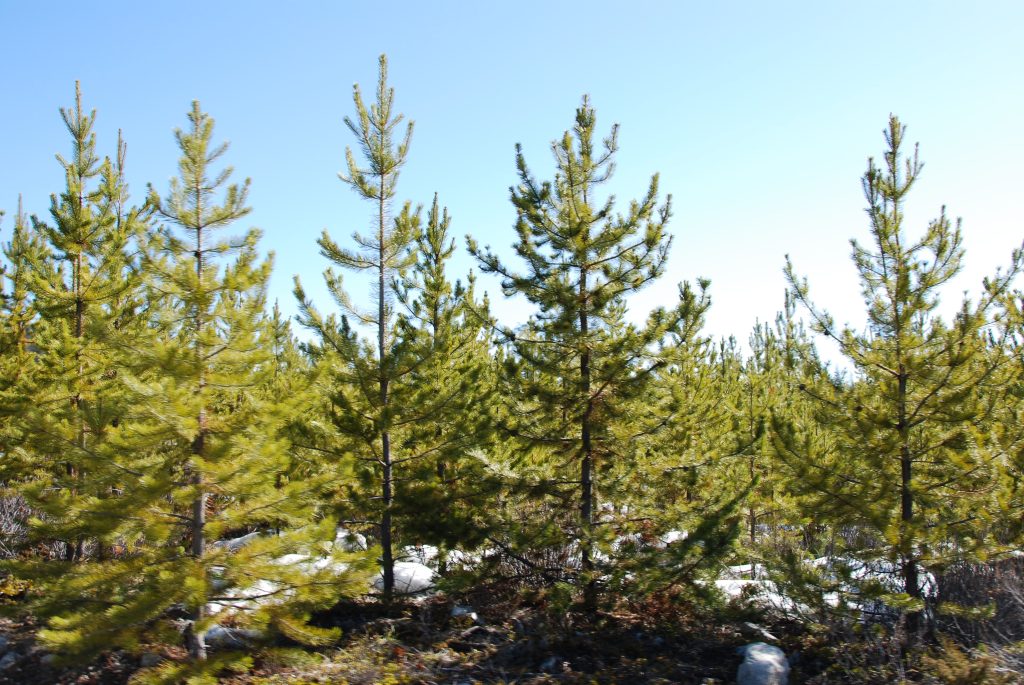
Features
Environment & Sustainability
Forestry
Decarbonizing the Canadian forest sector – The next steps in the journey
October 4, 2022 By Tom Browne
 Photo: Annex Business Media
Photo: Annex Business Media President Biden is implementing a far-reaching climate change action plan. Canada will have to follow if only to remain competitive. The forest sector benefits from bio-based heat and power, using bark, sawdust or black liquor. How the industry generates and uses energy may soon be under stress: the increased value society places on bioenergy over the next decade may lead to economic or policy pressures to assist in decarbonizing the broader Canadian society, through, for example, increased green energy exports.
In any case, policies such as carbon taxes mean decarbonizing the forest sector will be essential. Canadian natural gas is cheap compared to typical European prices, even more so since the start of the war in Ukraine. But a combination of demand for LNG, carbon taxes, renewable fuel standards, energy efficiency subsidies and other policies targeting climate change may well increase the cost, if not the price, of using gas. Increased energy efficiency is the first step in decarbonizing, followed by fuel-switching.
If your mill burns gas in a boiler, benchmarking data[1] can help identify steam reduction opportunities. Obvious clues that all is not right include the use of direct steam injection, for instance into paper machine white water reservoirs. This might make sense during startup from a cold shut, but the loss of condensate means that the flow should be stopped once operating temperatures are reached. Elsewhere, effluent streams needing cooling before discharge can point to heat recovery opportunities. Other steam demand reductions can usually be found to help reduce or eliminate fossil fuel use in the boiler.
A pinch analysis or modern process integration study can identify these and other heat recovery opportunities[2]. But savings arising from optimized heat exchanger networks are a strong function of water use[3]; the ideal network under high water use conditions will be different from the one at low water use rates. Reducing heat and water demands in parallel is critical for the best results.
Beyond heat exchanger networks, dryer hoods with malfunctioning or poorly maintained air recirculation systems lead to higher steam demand. Efficient evacuation of condensate from dryer cans is critical to dryer efficiency. The press and dryer sections are among the largest steam users in the mill, and optimizing these systems may offer a significant benefit.
Eliminating any remaining fossil fuel may require technologies such as gasification or pyrolysis to generate substitute biofuels. Lime kilns are a particular challenge due to the requirement for a minimum adiabatic flame temperature. A syngas with low heat content per cubic metre may also require larger fans and ducting to ensure enough heat is provided. Major suppliers of equipment to the pulp and paper industry offer biomass-fed gasification systems for lime kilns; and while the economics have been poor for smaller kilns, that may change as the overall cost of consuming fossil fuels increases. There is also at least one instance of a lignin extraction plant designed so pulverized lignin may be blown into the kiln with combustion air. Sawdust has also been burned in kilns in this fashion.
Power is generated in pulp and paper mills using biomass-fed power boilers or hydro dams. Government policies intended to free up green kilowatt-hours may offer economic or other incentives to assist in the electrification of urban transportation systems. As with thermal applications, electrical efficiency measures are a first step towards freeing up kilowatt-hours. For example, variable speed pump drives use less energy than a large fixed-speed pump pushing against a slightly open valve. It may also be possible to prioritize the generation of power for sale over the generation of back-pressure steam for process use. This would add to the urgency of improving steam efficiency and condensate return.
In-woods harvesting equipment will be difficult to electrify; liquid biofuels will remain critical here. Lumber kilns will benefit from efficiency measures and fuel switching. These are topics for another day.
These approaches all require capital spending. But early planning makes sense in case economics or government policies shift to prioritize energy efficiency, fuel switching and increased sales of green energy.
Tom Browne is Principal, Tom Browne & Associates. Reach him at tom@tcbrowne.ca.
Sources
- Browne, T. and Francis, D.W., “Energy Use in Canadian Mills”, PAPTAC Energy Forum, Montreal, 5 February, 2008.
- Mateos-Espejel, E., “Energy management and process debottlenecking”, Pulp and Paper Canada, 17 May, 2022. https://www.pulpandpapercanada.com/opinion-energy-management-and-process-debottlenecking/.
- Francis, D.W. and Browne, T., “Heat recovery and system closure in an integrated Canadian newsprint mill”, 2011 Int’l. Mech. Pulp Conf., Xi’an, China, 27-29 June, 2011.
Print this page